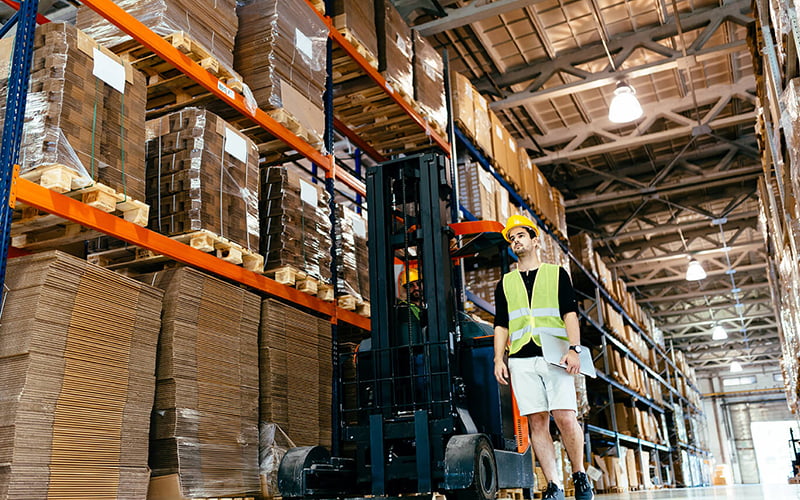Warehouse activities and maintenance could pose numerous health and safety risks if overlooked or done improperly. Failing to control them could lead to injuries, illnesses, high employee turnover, workplace disruptions, absenteeism, equipment downtime, legal issues, and even deaths.
Regularly appraising and prioritizing safety and improvements would keep supervisors, managers, and especially workers safe and operations running smoothly.
Here are a few safety measures to ensure a safe and well-run warehouse.
Define Clear Minimum Safety Standards
All employees and workers should become familiar with at least the most important of Occupational Safety and Health Administration (OSHA) standards. As the warehouse environment continually changes, defining clear minimum standards emphasizes the priority of work safety.
Standards as simple as requiring everyone who enters the facility to wear or use protective gear such as hardhats or safety eyewear would dramatically increase the welfare of the work environment.
Identify and Eliminate All Potential Hazards
Take the time to identify and evaluate the potential hazards or issues that could cause injury to workers, employers, as well as damage expensive machinery, are. Simple hazards such as floor cracks or holes, dangling cables, spilled liquids, or other potential hazards could become an issue.
On a regular basis, all employees must conduct a safety check on their working environments and equipment. This would not only ensure their well-being but also make them alert and pro-active when working. Safety sweeps also allow you to troubleshoot any potential safety hazards within the warehouse operation.
Establish Good Housekeeping
Another essential element in maintaining a secure warehouse is good housekeeping. Cleanliness and order allow employees and work to function effectively and productively.
Through training procedures, employees should be aware of what and where tools and equipment should go. Keeping the workplace clean and tidy prevents accidents, material damages, and even fire. Additionally, encourage employees and workers to clean up after themselves.
Remember, a clean and well-maintained warehouse is a safer warehouse.
Make Safe Storage and Handling the Standard
Poor material handling could cause bodily harm or equipment damage. Ensure that employees follow proper operating procedures and have access to proper equipment when transporting loads. Also, encourage your employees to help each other if they have difficulty in moving objects.
Conduct regular ergonomic and task-specific training for manual and machine lifting and handling.
Depending on the use, a warehouse could contain stock or items ranging from non-flammable to hazardous chemicals. Improperly stored or stacked objects could damage them or potentially injure workers.
Make sure to communicate with workers proper handling, storage, and identifying and disposing of hazardous chemicals. It is also important that both management and workers are adequately equipped to conduct regular safety inspections of hazardous stock or items.
Provide Up-to-Date Training and Refresher Programs
A well-run warehouse needs employees educated with up-to-date training and refresher courses on safe practices within the workspace. Better informed staff members would greater adhere to procedures regularly as they would be completely aware of the repercussions from not following.
Through regular training programs, workers would also know what to do in case of an accident and avoid unsafe working practices.

